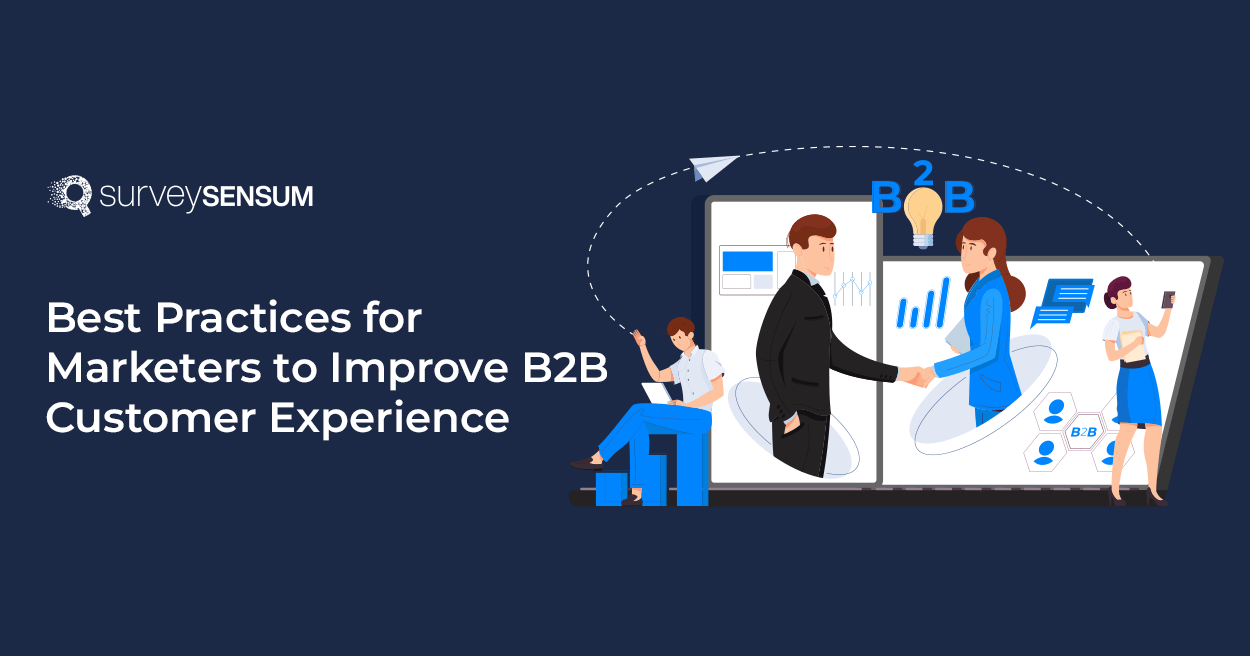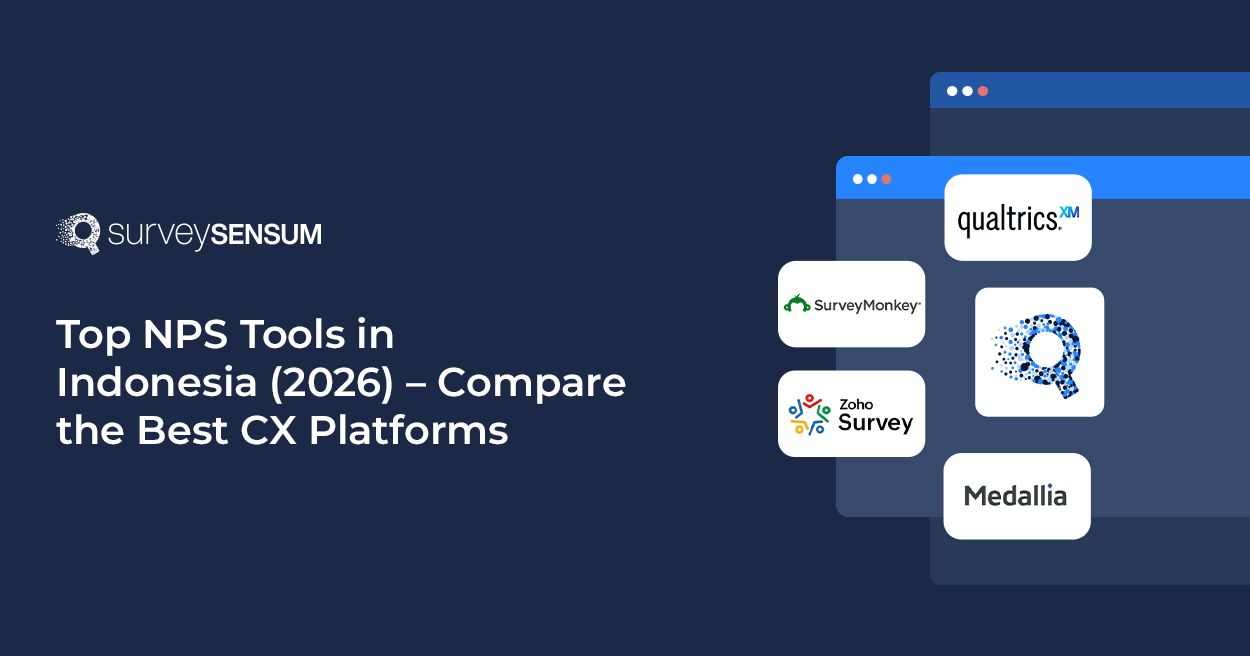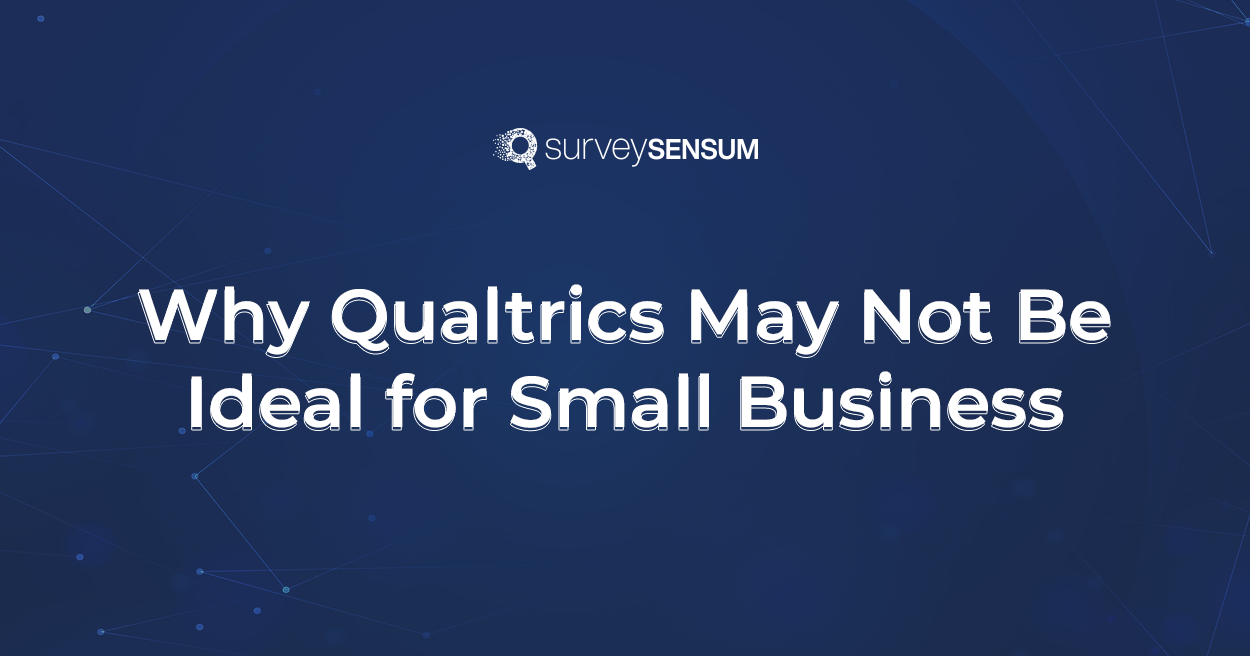

Struggling to make B2B saas customers happier?
But how?
– You must not only meet but exceed your customer’s expectations. It’s time to unleash the potential of your B2B customer experience. With effective strategies like personalization, omnichannel customer support, and an efficient VOC Program, you pave the way for a seamless, convenient, and hassle-free customer journey.
Dive into our guide for 8 simple yet powerful practices to help you improve your B2B customer experience and set your business apart from the competition.
8 Best Practices for Marketers to Improve B2B Customer Experience
Here’re the top 8 practices that you must include to enhance your customer’s experience:
1. Know your Customers

Have you fallen into the trap of oversimplifying customer needs, focusing only on product quality and price?
You’re not alone!
There are some times when for instance, sales teams, driven by short-term targets, tend to pitch what they have to sell, rather than what the customer truly desires.
This disconnect leaves customers feeling unheard and undervalued.
Instead, what should you do?
You must launch customer feedback surveys at the right touchpoints to give you insights into their expectations and experience. So that you can
- Step into their shoes
- Understand them better
- Actively listen to their concerns
- Comprehend their unmet needs
- Build strong relationships
This is how you can understand your customers better. Together, these steps—including offering self-service tools like a tariff calculator—create a personalized, transparent experience that aligns perfectly with your customers’ needs.
2. Your Customers Want Real–time Support–Quick Response & Resolutions

79% of businesses say that implementing live chat positively impacted their revenue and customer loyalty – Gorgias
How?
With live chat, your customers can ask questions right away. Your support team will quickly give answers and solve problems, providing excellent B2B customer service. That’s what customers like – fast help and quick solutions.
Apart from live chat, you can also use email, in-app chat, etc. to resolve their issues efficiently.
Also, integrate a well-organized ticketing system or close the feedback loop to track customer inquiries and ensure no messages slip through the cracks. Many businesses also integrate B2B lead generation solutions to capture and qualify inbound prospects while offering support. Assign dedicated teams to tackle specific issues. This will optimize efficiency, deliver personalized experiences, and boost customer trust.
Let’s use Updox as an example. When someone purchases Updox charge capture software, they’ll receive instant answers through live chat. This helps the medical businesses they support by ensuring they can continue to run smoothly after a short interruption.
This is how you can ensure you’re truly there for your B2B customers when they need you the most.
3. Foresee Customer’s Issues & Resolve Them
Think of yourself as having a small business called Creative Prints Co that relies heavily on printing marketing materials, brochures, and other documents. Previously, ink shortages meant manual cartridge purchases. But after subscribing to HP Instant Ink, you observe:
- Real-time ink monitoring
- When low ink triggers an automatic signal is sent to HP to deliver a new cartridge
- Recycle used ink cartridges – the eco-friendly choice
With this effortless ink procurement at a cost-effective subscription saves your manual time and effort.
This is how HP Instant Ink foresees and resolves its customer’s issues beforehand.
The key takeaway – Be a customer mind-reader!
Understand your customers’ pain points and proactively solve problems to build lasting relationships and improve B2B customer experience.
4. Listen to the Voice of your Customers
How do big B2B companies like Amazon, Salesforce, and Microsoft stay ahead in the market?
By constantly adapting to ever-changing customer needs, behaviors, and the business landscape.
Imagine you run a tech company and it is facing the complexity of managing Microsoft Azure resources. When you expressed this concern, Microsoft took it seriously.
What did they do?
- They revamp Azure’s user interface and make it more user-friendly
- Automate resource management tools
- Simplify allocation
And to keep up with ever-changing technology, Microsoft
- Continually updates Azure services
- Offers new features and improvements.
- Adopt the latest security measures to address data protection concerns, complying with evolving legislation.
- Value transparency and communication by keeping you informed about updates through newsletters, webinars, and support channels.
This is how Microsoft enhances the B2B customer experience for your business. Their commitment to ongoing improvement fosters customer loyalty and ensures long-term success in a dynamic and competitive industry.
You can also improve B2B customer experience → by being agile, customer-focused, and open to change. Part of this process involves regularly conducting a review of your customer feedback and adapting your approach accordingly.
For example, tools like Dripify can help automate outreach and engagement in a way that feels personalized, making it easier to gather feedback, nurture leads, and build stronger relationships—just like the biggest players in the market do.
5. Value your ALL B2B Customers- Not just ONE

Customers aren’t just transactions; they’re a varied group with different decision-makers and influencers. So, you need to serve all customer types, not just one.
Consider a company making elevators for big offices and homes. They initially only focused on pleasing building managers but forgot two important customer groups!
The “aha!” moment came when they mapped the entire journey, including housing association heads and elevator users. By tracking satisfaction separately for each group, they found new ways to make them happier.
For housing associations, being close to vendors was important. Now, they’re part of every step, from meeting salespeople to talking to technicians.
The special part: the elevator company created specific tracks for individual client needs, making things simple for most people. It’s like making a personalized menu for each guest!
By meeting the needs of all customer types, marketers create an amazing B2B customer experience.
6. Omnichannel Support – Everywhere, Anytime

Do you know how some B2B companies like SurveySensum have 98% customer retention?
Well, SurveySensum has effectively embraced an omnichannel approach coupled with digital support to engage and assist its B2B customers at all times.
They have diverse customer support options, including live chat, ticket system, email, WhatsApp, phone assistance, etc. Also, they boast an impressive customer retention rate of 98%, underscoring the strength of their comprehensive support.
If you go through their website, you’ll find ‘Resources’ that attract potential customers through educational blog posts, guides, reports, expert talks- webinars, and more.
In sectors like apparel management in the SaaS industry, improving B2B customer experience is essential for long-term success. Businesses can build stronger relationships and foster loyalty by focusing on customer needs through strategies like Abm marketing, which focuses on high-value customers.
This is how – by being available everywhere on various digital channels, SurveySensum ensures that its customers have easy access to the information, support, and resources they need to succeed.
Explore SurveySensum Today & Improve your B2B Customer Experience
7. Build Customer-Centric Culture
According to research by B2B International, only 14% of large B2B companies are truly customer-centric: That is to say, where the customer experience is deeply ingrained in the company culture.
Imagine you’re a software company, and you don’t just sell your software and call it a day. Nope, you make sure your client can smoothly use your software, right?
This is how you keep your customers first and build a customer-centric culture. Also, becoming customer-centric isn’t just good for your clients, it’s also a recipe for business success.
So, if you’re a B2B player, gear up to be the 14% that everyone else looks up to – the ones that genuinely put the customer front and center.
8. Offer Post-Purchase Support
Imagine your B2B customer, having just made a significant purchase from your company. They are excited about their new product or service, but what happens after that?
This is where post-purchase support comes in.
Post-purchase support ensures a seamless and hassle-free experience in the customer’s journey, guiding and assisting them at every step – from providing helpful onboarding materials to answering their questions promptly.
But it doesn’t stop there!
By actively seeking feedback and listening to their needs, you can create a powerful bond of trust and loyalty. This relationship goes beyond a single transaction; it’s an everlasting friendship that nurtures lasting partnerships.
So, be that guiding light for your B2B customers, offering them the post-purchase support they deserve.
With these best practices, you can create an unforgettable B2B customer experience.
And this brings us to the conclusion.
Conclusion
In conclusion, these eight best practices form the foundation for crafting an unparalleled B2B customer experience. As marketers, when you prioritize the needs and preferences of your customers, you can weave a seamless journey that sets your brand apart.
These practices if implemented right, can act as powerful enchantments to captivate your audience and double your market revenue.
So, take our B2B customer experience to the next level. And if you’re unsure of the right feedback tool, then explore SurveySensum. It is a leading B2B SaaS feedback software, to enhance our understanding of customer needs, gather invaluable insights, and build strong customer relationships.















